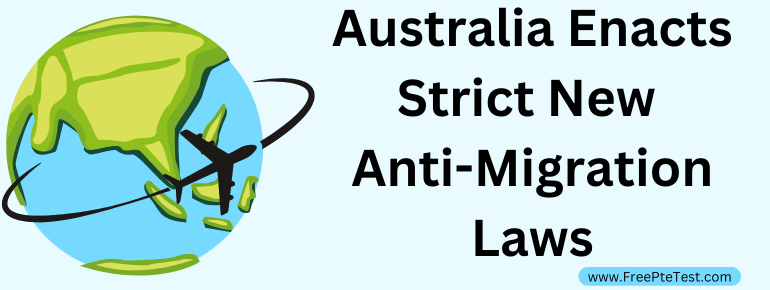Foreign Student Visa Rules: Australia is taking significant steps to manage the influx of international students by altering its visa processing framework following the failure of a proposed cap on student admissions. This move comes amid rising concerns over net migration and its impact on housing and public services.
The Australian government has faced increasing pressure regarding immigration levels, particularly in the context of international students.
Recent statistics indicate a surge in student visa applications, with net overseas migration estimates for the current fiscal year revised to 340,000, up from an earlier forecast of 260,000.
This increase has raised alarms about its effects on housing availability and affordability nationwide.
Foreign Student Visa Processing Framework
On December 18, 2024, Education Minister Jason Clare announced a new ministerial directive to regulate the processing speed of foreign student visas. The directive introduces a tiered system for visa processing:
- High Priority: Educational institutions that demonstrate sustainable operations will receive expedited visa approvals until they reach 80% of their international student capacity.
- Standard Processing: Once this threshold is met, visa applications will be processed more slowly.
This approach serves as a fallback after parliament rejected legislation to capping international student numbers at educational institutions. While advocating for caps on admissions, the opposition voted against the proposed legislation, leading to criticism from the government about their inconsistency.
Implications of the Changes
The changes are designed to ensure that visa applications are managed effectively and that student numbers remain within sustainable limits. Clare emphasized that the new processing framework aims to balance the needs of educational institutions with broader immigration goals.
Finance Minister Katy Gallagher noted that this would also help direct applications towards regional universities, which often struggle with enrollment compared to larger metropolitan institutions.
Despite these measures, there has been a notable decline in student visa arrivals—down 25% in the year leading up to June 2024—indicating that previous efforts to manage student numbers may have had some effect.
However, critics argue that the government’s measures are insufficient and have exacerbated existing issues related to housing shortages and public service strain.
Broader Migration Strategy
The recent changes are part of a larger migration strategy introduced by the Australian government, which aims to enhance the integrity of the international education system while ensuring that only genuine students gain entry into Australia.
This includes stricter requirements for proving financial capacity and higher English language proficiency standards for visa applicants.
As Australia prepares for upcoming elections, immigration remains a contentious issue. The government is under pressure to demonstrate effective management of immigration levels while maintaining Australia’s appeal as a global study destination.
In summary, Australia’s latest adjustments to foreign student visa processing reflect ongoing challenges in managing immigration amid rising numbers and political pressures.
The focus on sustainability in educational institutions is intended to create a more balanced approach to international student admissions while addressing broader societal impacts.



